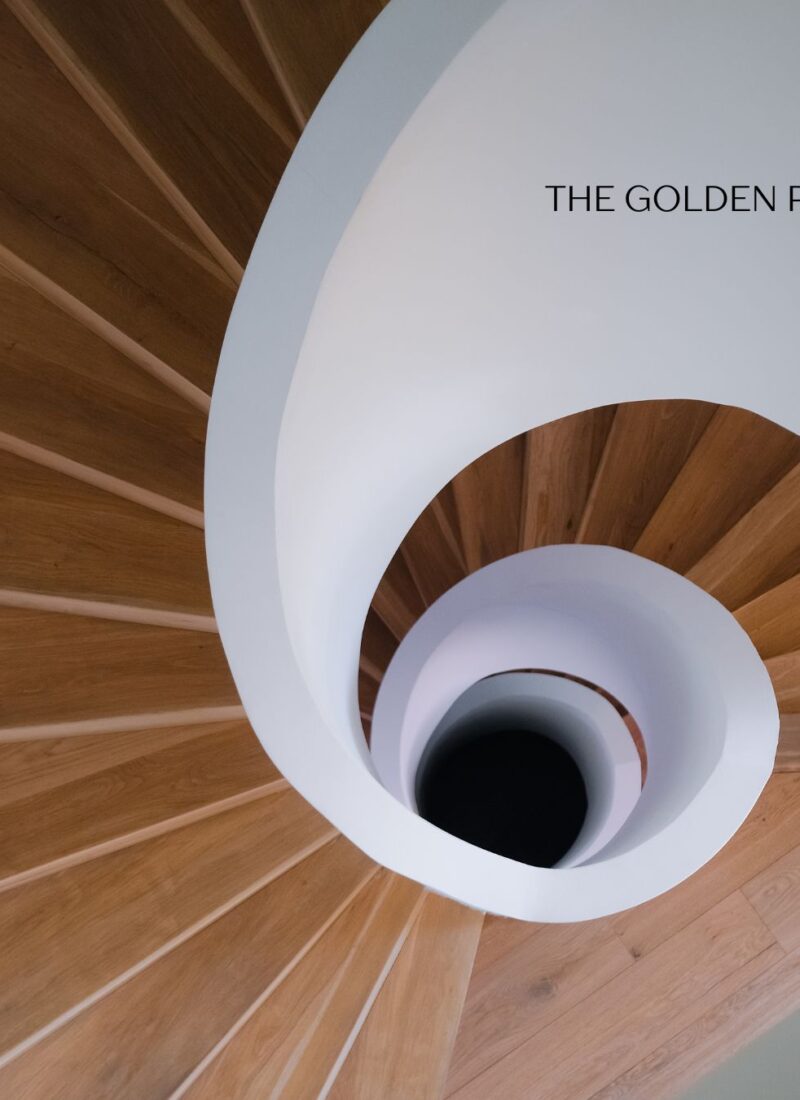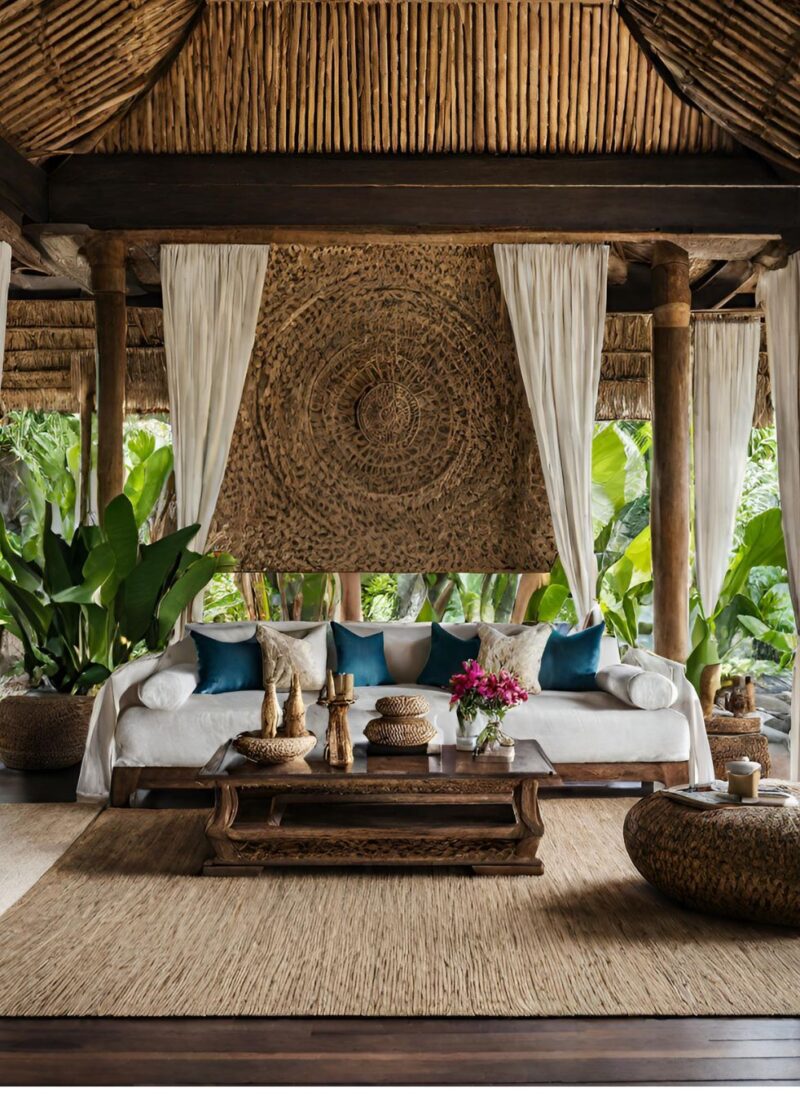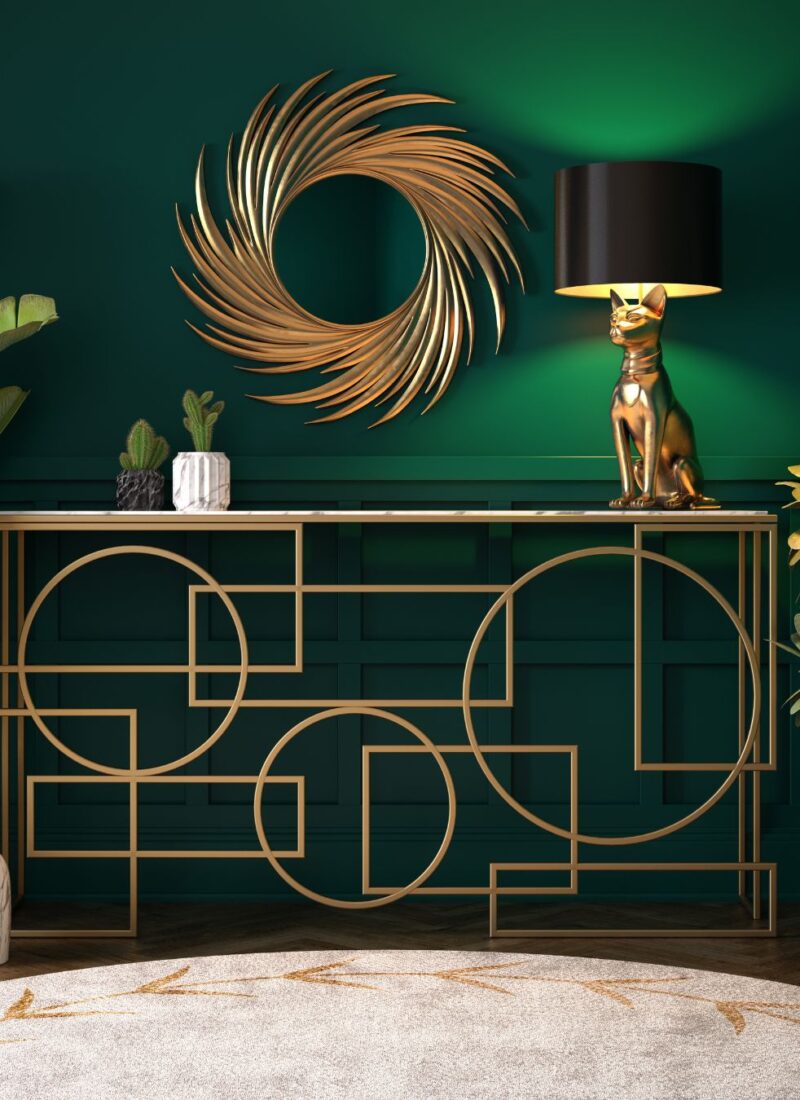
Zen is a philosophy that covers practically everything. It comes as no surprise when modern Zen interior design became a trend a few years back (and still is). What makes Zen tremendously popular nowadays is the inclusion of nature into the design.
This article delves into the specifics of what is Zen interior design. This will discuss the history of Zen and how it came to be used in interior design. This article also discusses the characteristics as well as the elements of zen interior design.
What Is Zen Interior Design
Zen interior design goes beyond mere aesthetics; it’s an expression of a philosophy that emphasizes balance, harmony, and simplicity. Originating from the Japanese pronunciation of the Chinese word “Chan,” which itself is derived from the Sanskrit word for meditation,
Zen in the context of interior design translates to creating spaces that evoke tranquility and peace. This design style is minimalist at its core, focusing on the essentials to create a space that encourages relaxation and contemplation.
How Can Zen Design Transform Your Living Space?
Adopting a Zen approach to your interior can transform not just the look of your home but also how you feel within it. By prioritizing open spaces, clean lines, and a minimalist layout, Zen design aims to reduce visual clutter and promote a sense of calm. Imagine entering a room that welcomes you with soft, natural light, a subtle scent that soothes the senses, and a visually harmonious environment free from chaos. Such a space isn’t just aesthetically pleasing; it’s a sanctuary that helps you unwind and recharge after a stressful day.
The Role of Natural Light in Zen Interiors
In Zen design, natural light is more than just a way to brighten a room; it’s a crucial element that enhances the sense of openness and serenity. Large windows that invite sunlight in can dramatically alter the ambiance, making spaces feel more expansive and connected to the outside world. The gentle interplay of light and shadow throughout the day adds a dynamic yet peaceful element to the Zen home, promoting a deeper connection with nature’s rhythms.
The Importance of Clutter-Free Spaces
A clutter-free space is fundamental to achieving a Zen-inspired home. Clutter is visually distracting and can lead to feelings of unease and stress. In contrast, a neatly organized room instills a sense of peace and order. Utilizing smart storage solutions and being mindful of what you bring into your space are key strategies in maintaining a clutter-free environment. This not only contributes to the aesthetic of minimalism but also supports a lifestyle that values serenity and simplicity.
Datsuzuko
Datsuzuko is your element of surprise. This is the element that breaks the monotony or uniformity of design.
Fukinsei
Fukensei is asymmetry. You add this concept to your Zen interiors to achieve balance. Zen interior design adds imagination and co-creation to your modern Zen interior designs.
-discuss the principle behind it.
Kanso
Kanso shows you don’t need to be exorbitant to exhibit beauty and usefulness. This evokes the feeling of freshness and cleanliness.
Koko
Koko gives importance to the limitations of embellishments and gives importance to what is only necessary.
Seijaku
Seijaku is the active pursuit of silence. This is the element of meditation you add to your designs. Seijaku encourages calmness and meditation.
Shizen
Shizen is the combination of the idea that you are part of nature yet you’re different. In Asian Zen interior design, this means incorporating natural elements such as plants and water into the design to create balance, the highest form of art.
Yugen
Yugen means there is more to what meets the eye. Beauty is in the subtlety; it’s in the details.
Zen Interior Design Characteristics
As people live in a hectic and chaotic world, they want to go home to a place of relaxation. A Zen-inspired interior design offsets the stresses of the day. These characteristics make up the Zen interior design style.
Earth Tones
Neutral tones dominate the Zen-like interior design. Neutrals can easily make you feel relaxed. But too many neutral colors would make the room boring. Add a splash of color to the mix to liven it up. Make sure that the vibrant color you choose would compliment the earthy background.
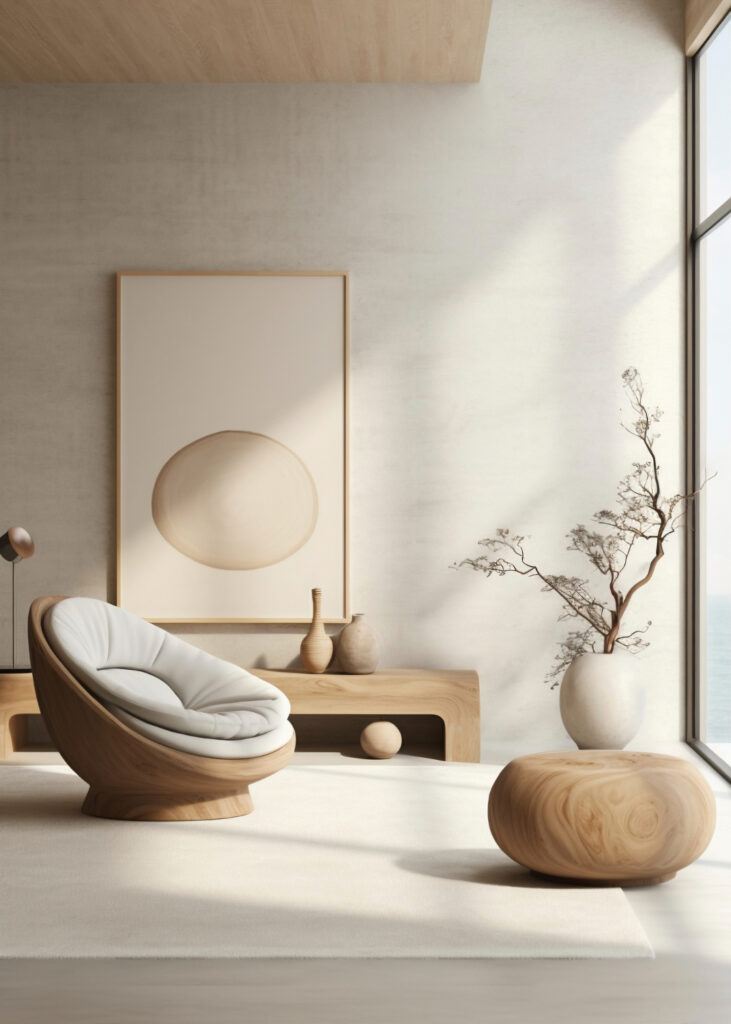
Open Layout
The Zen interior design allows open air which flows from the outside inwards. There are no partitions other than the walls of the Zen buddhist interior design home. Don’t add tall furniture or heavy curtains. You need to keep the vision unobstructed as you’re also impeding the flow of energy from room to room.
Natural Fabrics
Nothing could bring you closer to earth than using natural fabrics. Not only are these easy to clean and maintain, but such fabrics are also easy to procure. These types of cloth have a timeless appeal to them. Classy would an understatement for a Zen interior design bedroom.
Common Natural Fibers
- Cotton
- Wool
- Linen
You can add these fabrics as your curtains, beddings, and throw pillows.
Learn More About: Art Deco Interior Design Style Explained
Balance
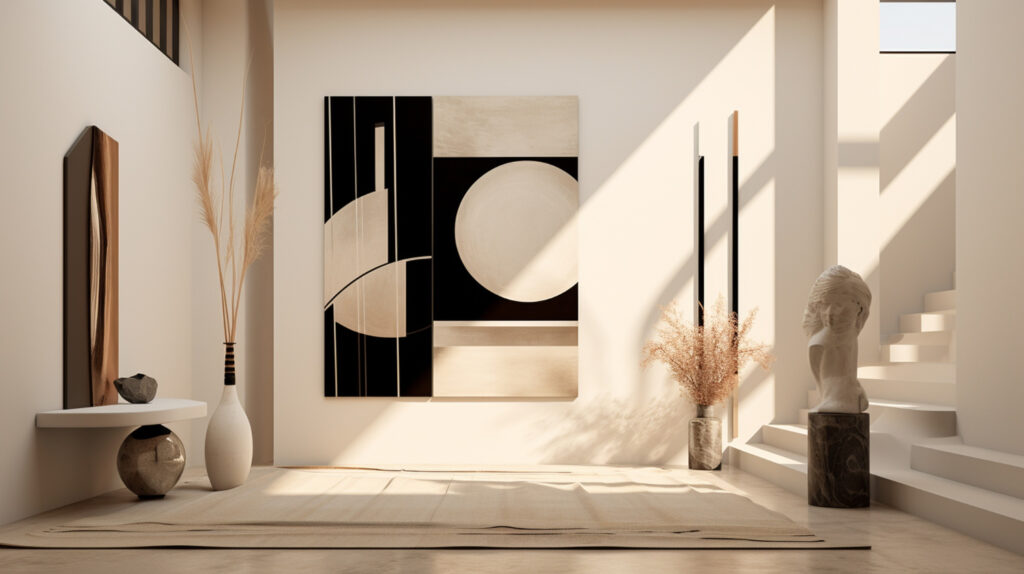
Balance is important in Zen philosophy and this is also applied in interior design. There is great consciousness when picking which furniture pieces are suitable for your aesthetics. This is to achieve inner peace.
There Is Beauty in Simplicity
There is no exaggeration in a Zen Japanese interior design. Another distinguishing factor of the Zen interior design book is clean lines. There are no excessive elements, rather, opts for pieces that offer functionality and comfort. Too many things going on can lead the mind to become busier and more chaotic, something that the Zen philosophy does not aim for.
Less Is More
Minimalism got its inspiration from Zen interior design. Similarly, you are going to find fewer decor pieces in a Zen interior design living room. Make sure that the decor and furniture you’d be using are functional and long-lasting.
Commune with Nature
A blurred line exists between the indoors and the outdoors in a refined zen elegance interior design. While it may be hard to design to incorporate this idea or not everyone lives near a forest, you can always add elements that can bring out such an effect. Add some tree detail on the wall of your zen interior design bedroom to create that forest feel.
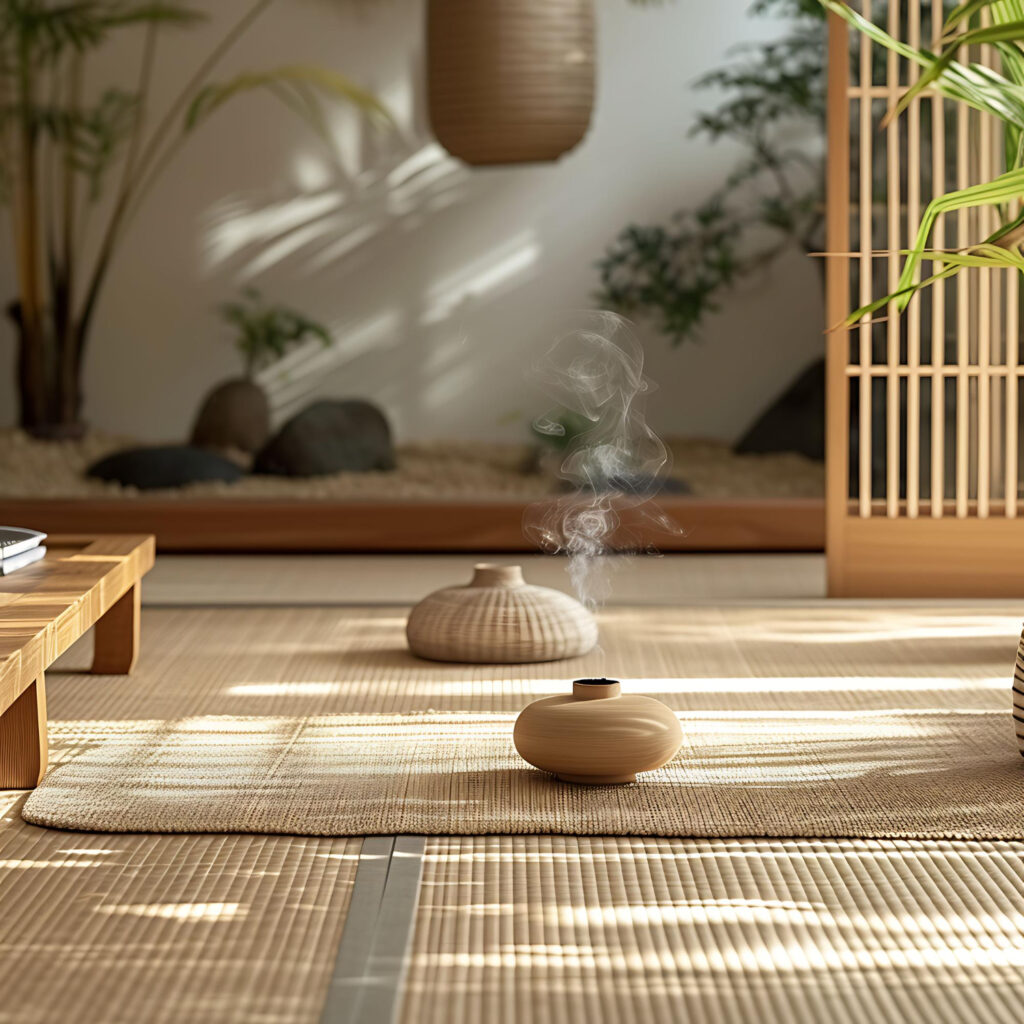
Clutter-less
The Zen interior design style is a clutter-free style. That being said, you should remove small elements that could count as clutter even if these are visually appealing. Furthermore, you should also eliminate those that you don’t use or anything eye-catching. The beauty of the Zen-inspired interior design, after all, is in the details and nuances.
Elements of Zen Interior Design
For the interior design, the zen elements imitate what is in nature, for example, the free-flowing movement of water or the abundance of light coming in from outside.
Lighting
Light plays a big deal for the minimalist zen interior design. Daytime means the room relies on natural light. At night time, your lighting must be like tha no t of the sun but can be dimmed to create a warm ambiance. You still follow the Zen ethos of calm and harmony as you step into the room. You can add a simple floor lamp beside your window or install white Japanese lanterns.
Here’s a tip: Avoid fluorescent lighting as this can be harsh and doesn’t do well with the Zen philosophy.
Layout
There is free-flow of vision in a Zen-interior design. There should be a seamless flow of energy from one room to another. That being said, the eyes should be directed towards space, not embellished door frames, wall art, or wallpaper.

When you have a wide door or window, make sure that this is not obscured by any additional design elements. The key here is the window or door is the gateway for natural light to come in. it also allows better air circulation as such can stimulate comfort and relaxation.
Flooring
You may want to have natural floorings such as bamboo tiles or wooden planks. You can skip the rug for this design. Match your light flooring with dark furniture to create balance. Alternatively, you can use dark floors contrasted against white wood furniture for an elegant modern Zen interior design living room.
Color Scheme
You might think you’d just stick natural hues all the time. Of course, you want to feel relaxed when you enter your home. The colors you add to your home should evoke such feelings.
However, think that Zen is rooted in the 7 principles mentioned above. You need to have a surprising item in the design. Add a splash of color to the throw pillows or add a blue table beside the door. You can also add neutral shades to the floors and ceilings and dark wood to furniture
Try these color palettes:
- Beige
- Grey
- Tan
- White
Storage
Hidden storage is a must in a Zen house design. But you must do so discreetly. Of course, you need that flat screen or that sound system. But this equipment doesn’t follow the Zen style. What should you do? Add a built-in cabinet that can store electronic gadgets and could keep them hidden until the next use.
Furniture

As furniture is the focal point for many rooms, choose the ones that have clean lines. This should not be flashy. Zen interior design furniture is mostly made from natural materials. It’s common to find waterfall and platform designs in this kind of design.
Furniture pieces should complement the space in which they are placed. As much as possible, use neutral colors or the same palette you used in the room.
Decor

Don’t clutter your decor. Your wall art pieces should be minimal. Don’t group your art pieces and smaller decor pieces together similar to the Maximalist room.
Avoid creating a chaotic room. A Zen living room design for small apartments should have at least one nondescript plant element. You can use fresh flowers but Zen is about living with nature. That being said, you should incorporate a live plant as part of your Zen interior design for small spaces.
You can also match Zen with rustic decor since the latter uses wood as its main design element. To remain true to the Japanese Zen style, you can add shoji screens to the walls or tatami mats to act as carpets. Also, you can cover the books in the uniform monochrome paper if you have a lot.
Is the Zen Interior Design for You?
Asian Zen interior design is for someone who likes to immerse in nature and would like to add such elements to his home. In addition, the Zen interior design is for someone who has grown weary of technology and would like to detach from it for several hours in a day. This kind of interior design is for someone who wants a soothing atmosphere that can offset the chaos provided by the world.
To End
The Asian Zen is an alluring and timeless design that is rooted in nature. Do you want this design for your home? Give us a call and our team could gladly assist you,
